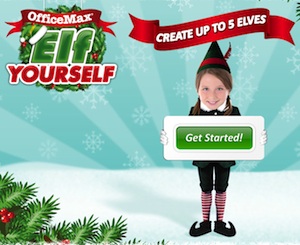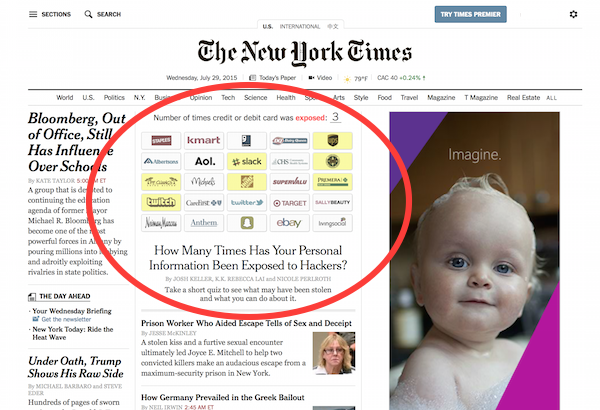If you think a hit rate of 1 out of 20 for marketing ideas is a poor showing, go Elf Yourself.
No, really. Take a lesson from OfficeMax’s “Elf Yourself” holiday campaign, that has been a viral brand marketing hit for four Christmas seasons in a row. The www.elfyourself.com web site lets people upload photos of themselves, friends, family, pets, etc., and transpose their faces onto animated dancing elves — and then share those e-cards via email, Facebook, Twitter.
Over 378 million people in 50 countries have elf’d themselves. The site has been featured on CNN, ABC World News, Good Morning America, The Today Show, Fox News, and hundreds of blogs (including TechCrunch).
All told, we’re talking about millions of dollars worth of public relations and brand exposure.
Yesterday, I was on a marketing technology panel at the National Retail Federation’s Big Show with Bob Thacker, senior vice president of marketing and advertising at OfficeMax, who offered some unique insight into the campaign.
“We were trying to create a holiday tradition, to help people connect the idea of holiday shopping with OfficeMax,” said Bob. “Most people don’t think of office supplies for gifts — but we’ve got computers, cameras, GPS’s.”
Elf Yourself was incredibly successful in achieving that goal.
But what I found most interesting was the way this viral hit came to be. Bob related that they actually launched 19 other web sites at the same time as Elf Yourself. Each had a rationale for why it might be a winner, but it was Elf Yourself that ended up taking off. OfficeMax ran it with and quietly dropped the others.
OfficeMax’s plan from the beginning was to experiment and harness crowd feedback.
This is a terrific example of what makes agile marketing — working quickly and iteratively to efficiently test new ideas with low risk — so different and powerful than the old approach of “place a couple big bets and pray.”
“The cost of those 20 web sites was less than a single TV spot,” said Bob. The ROI of Elf Yourself made the cost of experimenting with the other 19 ideas not much more than a rounding error.
Thanks to Darrell Fry at CrossCap, who organized and moderated the panel, which also included Greg Navalance of American Eagle Outfitters and Jay Kolbe of Weber Shandwick.




It’s a good lesson in how much effort goes into making a winner. There’s a lot you don’t see. The best way to have a great idea is to have A LOT of ideas.
I find these photo mashups to be annoying so I never watch them. I wonder what percentage of those that elf their loved ones remember that Office Max provided they service? There a lots of examples of great ads where the viewer doesn’t remember who the ad was for. So memorable doesn’t equate to performance if the viewer missed the brand.
I also wonder how it helps their brand awareness/advocacy.
/sounds like I’m cranky this Monday morning!
“The best way to have a great idea is to have A LOT of ideas.” Well said!
I’m not much of a photo mashup person myself either, but according to OfficeMax this campaign lead to 190% increase to their web site and a sustained increase in online and walk-in sales.
I agree: often hard to separate the memorability of the “creative” versus the “brand” in these situations. But given the outsized exposure they received, even if only a tiny fraction of it truly impacted their brand, it would still be ranked as a major success.
Welcome to Monday! 🙂
1 of 19 seems poor at first glance, but the one winner makes it all worthwhile.
Realistically, without an agile marketing approach 19 opportunities to test would not have ever materialized.
Tough to argue with 190% traffic increase!